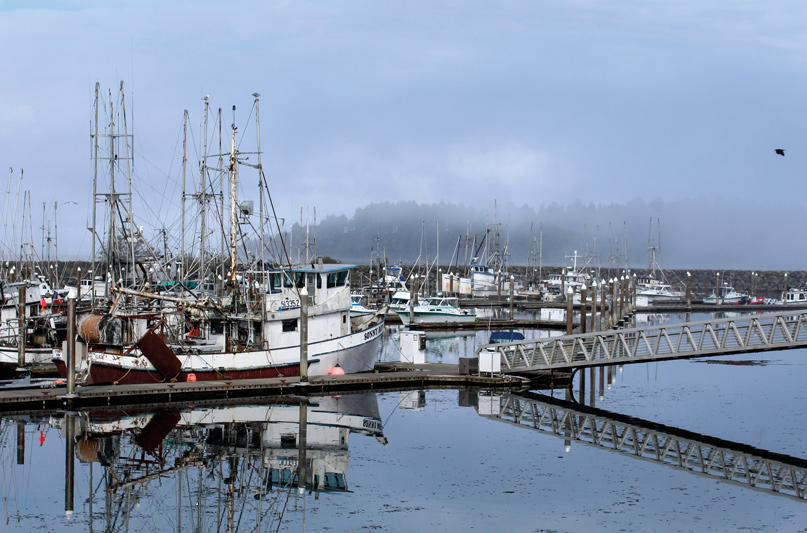
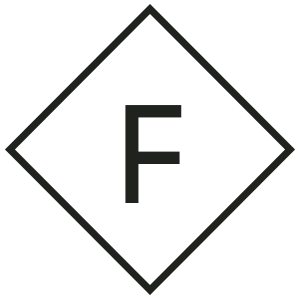 For astronomers studying the cosmos, the term singularity defines the point where a property is thought to be infinite. For example, according to classical theory, the center of a black hole is a singularity because the density is thought to be infinite, hence making the laws of physics as we know them to cease to operate. Neah Bay, a dot on the map of the Makah Indian Reservation on the Olympic Peninsula, is similarly a singularity.
For astronomers studying the cosmos, the term singularity defines the point where a property is thought to be infinite. For example, according to classical theory, the center of a black hole is a singularity because the density is thought to be infinite, hence making the laws of physics as we know them to cease to operate. Neah Bay, a dot on the map of the Makah Indian Reservation on the Olympic Peninsula, is similarly a singularity.
The infinite variable in question? I’m still not quite sure, but it’s there. Perhaps it is the indominable spirit of the Makah people.
Mankind’s ongoing story of Neah Bay has deep roots. The culture known today as Makah started in Canada thousands of years ago, with the first of the Makah people conquering and settling parts of the Olympic Peninsula as part of a cultural expansion. To this day, it’s not inconceivable to compare their historic relationship to the Quinault—another regional tribal power—to the rival Grecian city state powers of Sparta and Athens.
Before Neah Bay was even named such, the Spanish settled in the bay in 1792 under commander Salvador Fidalgo, naming their new home Nuñez Gaona. This is considered the first European settlement in Washington, however, they departed after a relatively short occupation. Neah Bay as we know it was actually two Makah villages, di.ya. on the west end of Neah Bay and bi?id?a on the east. The east village was devastated by smallpox in 1852, and its residents moved to di.ya..
The new community became Neah Bay and the hub of the Makah Reservation. The modern Reservation is about 28,000 acres, compared to the 700,000 acres the Makah believe to be their ancestral territory.
Today, the Makah face many of the same problems that tribal peoples across North America endure. New generations confront the daunting task of embracing the past and tribal life with the allure and challenges of mainstream America. Still the culture lives on, celebrated publicly every August during Makah Days and in day-to-day life on the sea and within their close-knit community.
For visitors by land and sea, Neah Bay beckons. The town has a large, well-endowed marina that is a favorite for anglers chasing everything from salmon and halibut to ling cod and rockfish. Boaters of all kinds will find safe harbor here. Note that Neah Bay is a dry town, so you’ll not find a sea salty bar to lurk in. The staggering natural beauty, fresh seafood, and insight into the Makah story are all a core part of the experience.
STAY AWHILE
NEAH BAY HIGHLIGHTS
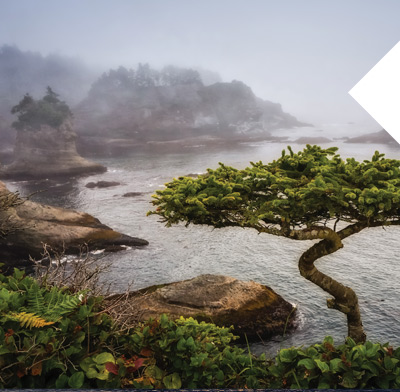 |
Makah MuseumFor many, the Makah Cultural and Research Center is the big draw and soul of Neah Bay. A cultural colossus, the Makah Museum serves as both an enlightening experience for visitors and a permanent tribute to the Makah. Not only does the excellent museum contain mandatory information for Pacific Northwest residents, but the ongoing research within is vital to discovering and preserving knowledge about the largely mysterious past of the Makah people. Located about half a mile from the marina on Bayview Ave., across the street from the U.S. Coast Guard station, it’s safe to say that you haven’t been to Neah Bay unless you’ve visited the Makah Museum. It’s open seven days a week from 1000 to 1700 hours and adult tickets are $6. You can learn more at makahmuseum.com. |
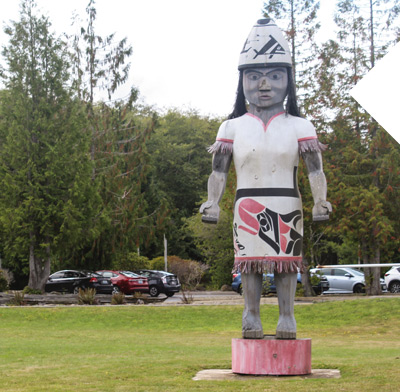 |
Flattering FlatteryNeah Bay is the gateway to Cape Flattery, the most northwestern point of the contiguous United States. A striking geologic feature in its own right, an incredible view can be had from Cape Flattery a mere 15-minute drive away. A modest .75-mile trail leads visitors from the parking area to the dramatic, westward facing cliffs and viewpoints. Kessiso Rocks and Jones Rocks are populated with marine life such as seals, sea lions, and sea otters. Orcas are often sighted preying upon them, a life-and-death nature documentary on perpetual repeat. Tatoosh Island, named after a Makah chieftain, with its decommissioned lighthouse can be seen from Cape Flattery as well. Technically a cluster of small islands, they were collectively added to the National Register of Historic Places in 1972. Although the lighthouse was announced as the National Trust for Historic Preservation’s newest National Treasure in 2017, there is no funding available to address emergency repairs recommended by the U.S. Coast Guard. To get out there, you’ll need motor transport from the marina. I’d recommend reaching out to the Big Salmon Resort (bigsalmonresort.com) or asking the folks at the Makah Tribal Marina for ideas. They’re pretty dialed in and should have ideas. Biking to Cape Flattery may not be impossible, but the terrain is rather up and down and the roads winding. |
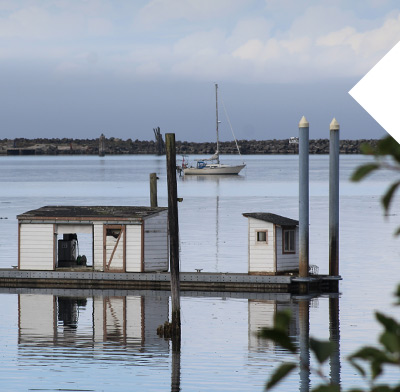 |
Resupply on the Rez\Although not a tourism attraction per se, Neah Bay is an excellent point of resupply for weary cruisers exiting the Pacific or steeling themselves on their westward transits out of Puget Sound or a hop across the Strait of Juan de Fuca to Canada. In addition to fuel and restaurants, Washburn General Store has just about everything one would need; including groceries, hardware, basic gear, and Makah recreation passes. It’s located across the street from the marina near the post office and Makah Community Gym. If you want some seafood for dinner aboard, the Take Home Fish Company is a short walk west from the marina on Portage Street. Essentially an add-on to a house, this place is where you can get the good stuff straight out of the water. The Makah Tribal Mini Mart is on the walk as well. Your dollars do a lot of good in this community, so fill up. |
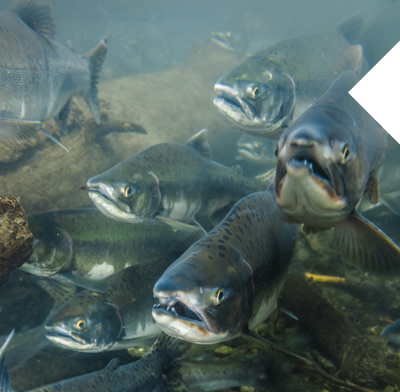 |
Slamming SalmonNeah Bay’s identity has been intertwined with the sea’s bounty since time immemorial. Cultures have come and gone ashore, but the quarry remains: salmon, ling cod, halibut, rockfish, sea bass, greenling, and Dungeness crab. The many commercial and recreational fishing vessels in the Makah Tribal Marina is a testament to this natural rhythm that supports entire livelihoods. If you’re planning to hit the waters of Neah Bay, remember that you need a tribal fishing license if you’re within Makah Reservation waters in addition to a Washington State fishing license (Marine Area 4). You can also charter one of the local outfits and benefit from their professional expertise. The Big Salmon Fishing Resort is a prominent resource on the water with tourist information, charter boat services, tackle shop, lodging, and more (bigsalmonresort.com). Another great resource for information, charters, and locations to purchase permits is makah.com (also host of marina information). |
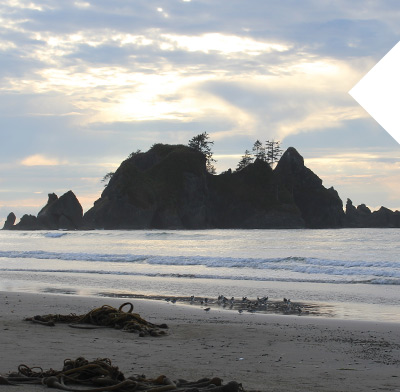 |
Beach BummingA complement to a visit to Cape Flattery, if you figure out a car transportation scheme, is time on one of the nearby excellent beaches. These of pristine beaches are gems, all within a handful of miles of Neah Bay. From north to south, there’s Hobuck Beach and Shi Shi Beach, each with their own unique flavors. Hobuck Beach hugs the edges of Makah Bay and is under tribal jurisdiction. Overnight camping, RV-ing, and cabins are available from private entities like the Hobuck Beach Resort and Hide Away RV Park. The emphasis on these beaches is multi-use and accessibility. The 2.3-mile long Shi Shi Beach is the one for the nature addicts. Located beyond a two-mile, tribe-managed trail, the beach is part of Olympic National Park. If driving, you’ll park on reservation land, so have that Makah Recreation Pass ready ($10 at Washburn General Store). Additionally, overnight parking is available at a lot ($10 per day, self-pay behind the porch). A hike to Shi Shi and back can easily eat up a whole day, or with a National Park backcountry pass, you can camp overnight for an excellent beach experience. The sunset over the Pacific with the campfire crackling is what Cascadian dreams are made of. |
SEWARD, ALASKA
GASTRONOMY
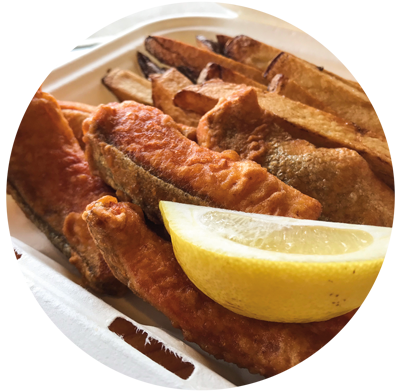
The relatively modest foodie scene of Neah Bay is one of the town’s big draws, but not because you’ll find trendy, fine cuisine from all over the world. No, Neah Bay’s foodie scene is a genuine expression of the people who live there with a practical eye to the visitors. There’s a cluster of establishments near the Makah Tribal Marina with a local ingredients and mom-and-pop comfort food emphasis: Pat’s Place, Linda’s Woodfired Kitchen, and Warm House Restaurant. All three are great choices with cozy, family friendly settings. Across the street is the Cedar Shack Espresso and Ice Cream, offering hot caffeinated beverages for frigid foggy days and ice cream for hot sunny ones.
The seafood is as fresh as it gets, although they were “fresh out” of crab and their clam chowder when I was there. A salmon and chips basket ($12, silvers were running) and fresh-baked chocolate chip and banana-pumpkin bread for dessert ($3) while chatting with friendly locals about life in Neah Bay as a fog bank rolled in was perfect.